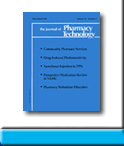 |
 |
THE USE OF FINASTERIDE
IN TREATING ANDROGENETIC ALOPECIA IN ADULT MEN
Karen C
Hobdy-Henderson, Chad LeClair, Tam Huynh, and Kiet Huynh
To request full article click here.
OBJECTIVE: To review the medical literature discussing the use of finasteride in the treatment of androgenetic alopecia in adult men.
DATA SOURCES: English-language journal articles, the Internet, and the manufacturer's package insert.
STUDY SELECTION: Clinical trials evaluating the efficacy and safety of finasteride in the treatment of men with mild to moderate androgenetic alopecia were selected. Of these trials, those evaluating the efficacy of finasteride were blinded, randomized, placebo-controlled studies of 12-months' duration conducted in men between 18 and 41 years of age; those evaluating the safety of finasteride were conducted in rats, mice, and rabbits.
DATA EXTRACTION: Data were extracted and analyzed if the information was relevant and consistent. Study selection was based on study design and clinical end points.
DATA SYNTHESIS: Male pattern hair loss is a common condition in which men experience thinning of the hair on the scalp. This often results in a receding hairline or balding on the top of the head. This type of hair loss is known as androgenetic alopecia. In men with androgenetic alopecia, the balding scalp contains miniaturized hair follicles and increased amounts of dihydrotestosterone (DHT) compared with a hairy scalp. Administration of finasteride decreases scalp and serum DHT concentrations in these men, causing an increase in the number of scalp hairs for most men and helping to fill in thin or balding areas of the scalp.
CONCLUSIONS: Finasteride is the first oral drug in its class to be used in treating alopecia in men only. It maintains and regrows hair on top of the head and anterior midscalp area. Finasteride begins to block the formation of DHT almost immediately; however, because hair grows slowly, visible results from the daily use of finasteride are not seen for at least three months. This drug is not recommended for use in women and children. Finasteride demonstrates an excellent profile in treating men with hair loss.
J Pharm Technol 2000;16:50-3.
To order the complete CE article click here.
To request full article click here.
|
|
|
||
|

